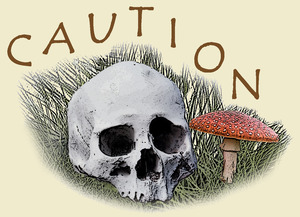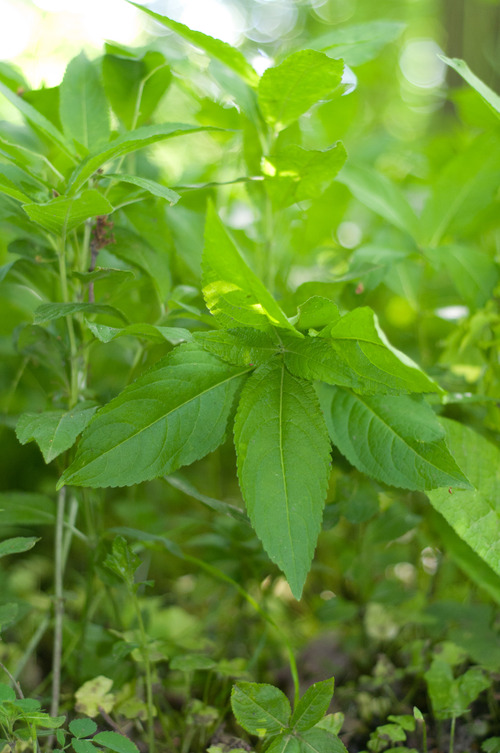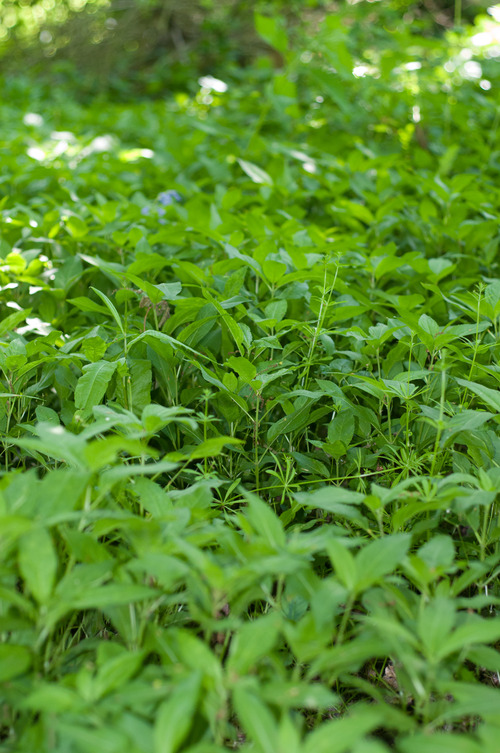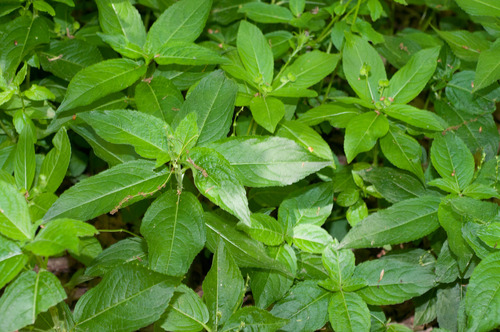

Dog’s Mercury (Mercurialis perennis) is what we call an indicator species, meaning it helps to date the woodlands that it grows within. Sometimes Dog’s Mercury can be found growing in areas which were once heavily wooded, but thanks to changes in land use and management it often stands alone, but provides a good clue that trees were once present.

Dog’s Mercury, is a common woodland species where it spreads by underground stems, covering large swaths, often appearing with other woodland species, such as violets and bluebells, but it does have a habit of shutting out many other flowers once it’s taken hold, becoming a dominant species.
In appearance, it’s nothing special, maybe 20-40cm tall with a somewhat hairy and course texture. At first glance, this perennial plant appears innocuous, but this couldn’t be further from the truth.


There is not all that much known about the toxic substances within the plant, although saponins and methylamine (mercurialine) are thought to be present. Due to the unappealing appearance (some would say a little bland) there are very few reported cases of poising as a result, at least in recent times. This said, the most recent report of mistaken identification came from a couple of foragers who mistook it for brooklime (Veronica beccabunga). Following cooking it for their supper, the two suffered with nausea, vomiting and abdominal pains within 3 hours. The couple were hospitalised and both fully recovered within 48 hours.
Poisoning to animals is more common, especially among cattle, sheep pigs, goats, horses, dogs and rabbits. Occasionally the poisoning is fatal.
As a general rule, any plant which carries the name ‘dog’ was considered an inferior species, either because it lacks the scent of a closely related species, a good example being sweet violet which has a lovely perfume, and that of the dog violet which lacks the sweet scent. The name 'dog’ may also refer to the lack of medicinal properties, or the presence toxins. In general, although not a set rule, the 'dog' prefix means the plant lacks something which a closely related species has in abundance.

Fran jones on 18/11/15
My dog also seeks this out and seems to love to eat it. How does it affect dogs as they seem to love it.
Susan on 03/06/14
My dog seeks this plant out when on walks in the wood near home. I am aware of its dangers, but does it have any medicinal value to a dog which has a long-standing (prior to finding dog's mercury) stomach problem?
ogg on 16/05/12
The 'dog' prefix was/is given to differentiate two species closely related, to the 'inferior' species. Here, Dog's mercury is a (medicinally) lesser plant than English mercury, and the theme continues for rose and dog rose (no smell), violet and dog violet (ditto). Dogwood is different though, that come's from 'dag' or 'dagger' because it was used as a meat skewer.
Sue on 09/02/17
I picked some dog mercury and ate it on a salad. I thought I'd read that a small amount was ok to eat. Luckily, I didn't feel happy with it and only ate a little, but that was enough to cause my lips, mouth and throat to burn. This was followed by a feeling of shaky weakness and a need for the toilet.
The symptoms were mild, but I feel I was very lucky. Of course, I read my herbal books and also googled 'dog Mercury' in order to identify the symptoms. I certainly won't be gathering any more, that's for sure.
Regarding dogs eating it, I did wonder if they do so in order to cure themselves of worms. Perhaps a small amount would work....but if they get the dose wrong, problems would arise?